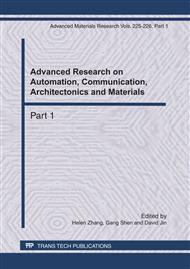p.1167
p.1171
p.1177
p.1183
p.1188
p.1192
p.1196
p.1200
p.1204
Disquisition on Development of Industrial Groups Based upon Entropy Theory
Abstract:
Entropy, principle of entropy increase and correlative entropy of industrial groups were expatiated. Based on the Prigogine formula and perspective of entropy change, it depicted the situation of innovation in the industrial groups, discussed characters of entropy change in different stages of industrial group, and indicated that survival of industrial group depends on negative entropy, evolution power of industrial group competition has its root in surplus of negative entropy, and key headspring for innovative advantage of industrial group bases on knowledge collaboration by inputting negative entropy.
Info:
Periodical:
Pages:
1188-1191
Citation:
Online since:
April 2011
Authors:
Price:
Сopyright:
© 2011 Trans Tech Publications Ltd. All Rights Reserved
Share:
Citation:


